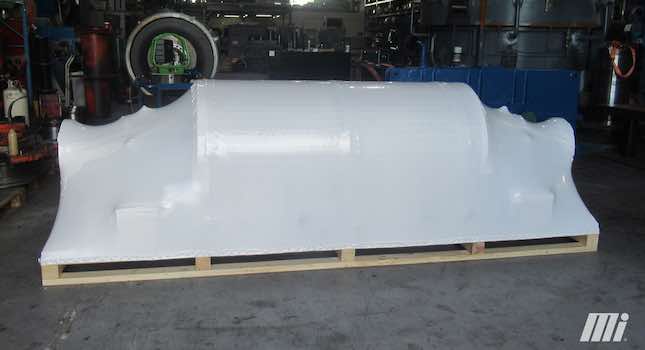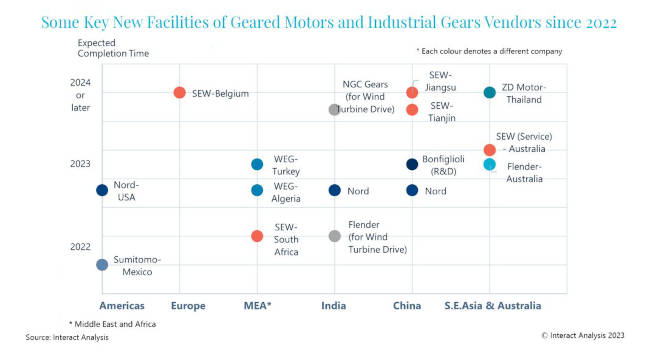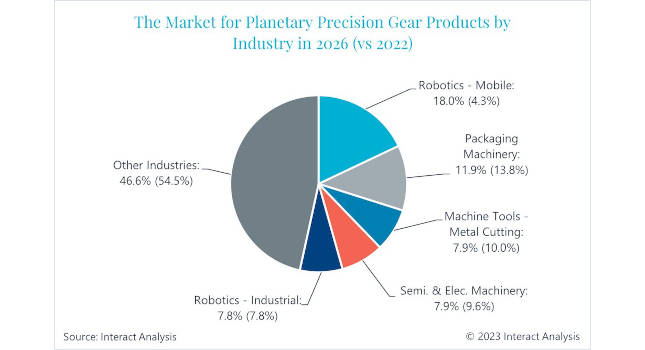Unit handling conveyors transport a variety of discrete items with a definable shape, such as packages, cartons, and totes, while linking receiving, storage, assembly, and shipping operations.
Unit handling conveyors transport a variety of discrete items with a definable shape, such as packages, cartons, and totes, while linking receiving, storage, assembly, and shipping operations. Powered belts and rollers are two of the most common conveyor choices for moving unit loads.
Belts
Belt conveyors are particularly well suited if the speed of travel and spacing of loads require control. A variety of belt types and surfaces are available to create the appropriate carrying surface to handle a wide assortment of transported product sizes and shapes. These conveyors travel horizontally (floor level or above) or incline/decline between elevations, move in either direction with the appropriate drive, operate at various speeds, and are fixed, portable, or telescoping.
This equipment typically operates at 40-60 fpm, with movement up to 200 fpm available. Maximum live load at common belt widths (12-36 in.) is about 150 lb/ft.
Belt conveyors are available in slider bed and roller bed versions. Product weight and configuration are the primary factors in selecting the most practical and economical version.
Slider bed conveyors have the belt running over a continuous surface (usually metal) attached between the tops of channel frames. The friction of coefficient is a high 25-30%, which increases motor size and energy requirements. The friction figure declines as the slider bed becomes polished, but is always considerably more than a roller bed.
Slider bed belt conveyors are the best choice for moderate speed transportation of small or unstable, light-to-medium weight, irregular shaped products. This type is a good choice for economical movement between floors or elevations, and for constant product spacing and orientation.
Roller bed conveyors have the belt supported by regularly spaced rollers. In essence, this type is a conventional roller conveyor with a belt added on top. Roller beds create a 5% coefficient of friction, which translates into smaller motors and drives and less energy than slider beds. Two or three rollers should be under every product.
Roller bed belt conveyors are the logical choice if economic life is the prime selection factor since they last longer and the operating cost is lower. This type is also practical when moderate-to-high speed, continuous flow of light-to-heavy items is critical.
Rollers
Roller and belt conveyors are equally capable of handling many applications. However, rollers are the better choice for accumulation activities because of the zero and minimum pressure options available to move, slot, or halt product flow. Rollers are also more practical for integration into material handling systems because merges, curves, and diversions are easier to install in the flow path. Rollers conveyors placed overhead or on the floor are used for transporting, accumulating, dwelling, diverting, and processing.
Roller conveyors are available in a number of variations to match the application. Types are based on the drive used to turn the rollers. The most common drives are belt, line shaft, and chain.
Belt driven roller conveyors are used for cartons and totes in the light-to-medium duty range, and are easily adapted to diverting, transferring, and minimum and zero pressure accumulations. Two belt versions are available: flat and V.
Flat belt roller is physically similar to a standard belt conveyor. The major difference is that the belt is below the carrying rollers, rather than on top. Pressure rollers are under the drive belt. Rollers move up to down to create more or less pressure on their surface and increase or decrease travel speed.
V-belt roller has the belt and sheave arrangement mounted on one side of the frame. The sheave performs the duty of the pressure roller. V-belts handle lighter loads than flat belts at higher speeds. This type is well suited for direction changes because the belts flex around the radius of curves.
Line shaft conveyors control rollers individually. Each roller has a groove near one end. The drive shaft runs the length of the conveyor, with a single motor. A series of pliable polyurethane belts connect the drive shaft spools to the rollers.
This type of conveyor is suited for transporting, sorting, and accumulating cases or totes in light-to-medium duty. One drive powers straight sections, curves, spurs, and other accessories.
Chain driven roller conveyors are the most popular type for handling heavier loads. These conveyors serve the medium-to-heavy duty end of the scale using a strong, positive drive to force loads to attain a definite orientation or location. Weight, sorting, and accumulating activities are easily incorporated. Two chain versions are available: continuous and roller-to-roller.
Continuous chain uses a single strand moving over sprockets welded to each roller. This approach is used for lower weight, higher capacity, and accumulation. Continuous chain is good for transportation, but not suitable when starting and stopping are frequent.
Roller-to-roller chain uses individual loops to connect pairs of rollers in a staggered pattern. In other words, each roller has two chains that transmit power down the line. This type handles pallet, skid, or drum loads up to 10,000 lb. Starting/stopping and reversing are possible.
-Ron Holzhauer, Managing Editor,
630-320-7139, [email protected]
Plant Engineering magazine would like to thank Ermanco, HK Systems, Rapistan Sytems, and Webb Heavy-Duty Roller Systems for their special contributions to the development of this article.
For more information on conveyors, visit the “Material handling” channel of our web site, Plant Engineering Online, at www.plantengineering.com.
Types
Selection
Safety
Maintenance
&HEADLINE>Selection factors&/HEADLINE>
Load dimensions
Load weight
System throughput
Safety requirements
Projected flexibility and expandability
Economics
Noise level requirements
Sophistication and automation level desired
&HEADLINE>Safety considerations&/HEADLINE>
There are a number of safety factors to keep in mind when selecting and operating a conveyor system.
On-off controls should be placed in convenient locations near operator workstations. More than one pushbutton station is often needed for long runs. An emergency pull cord should be placed along the length of the conveyor.
Warning lights and buzzers indicate startup of the conveyor. Time delays may be incorporated to give the warning several minutes before the actual start.
Signs and labels provide warnings and cautions against removing guards or bypassing safety devices.
Guards should be placed around conveyor drives and to cover nip points, such as between a belt and end pulley. Guards also prevent access to the underside of a conveyor, prevent items from dropping from an overhead conveyor, and keep cartons from falling off overhead package conveyors. Other guards are placed around couplings and pulleys. Chain covers protect sprockets.
Noise control involves several considerations.
Lower conveyor speed when possible, as long as desired throughput rates are maintained. The faster a conveyor moves, the faster rollers, wheels, and bearings operate and vibrate, and the more noise generated.
Reduce or eliminate metal-to-metal contact.
Prevent vibration of loose components. Ensure nuts, bolts, screws, and plates are kept tight.
Use high quality precision bearings to reduce noise generation. Plastic bearings cut sound transfer.
Paddle or group and paddle loads to baffle sound.
List acceptable noise level criteria in bid specifications.
In addition to equipment considerations, most conveyor manufacturers recommend 12 basic safety rules.
Don’t perform service on the conveyor until the motor disconnect is locked out.
Use only authorized maintenance personnel for service work.
Keep clothing, fingers, hair, and other parts of the body away from the conveyor.
Don’t climb, step, sit, or ride on the conveyor.
Don’t load the conveyor outside design limits.
Don’t remove or alter conveyor guards or safety devices.
Know the location and function of all stop/start controls.
Keep all stopping/starting control devices free from obstructions.
Keep all personnel clear of the conveyor before starting.
Operate conveyors only with trained personnel.
Keep the area around conveyors clear of obstructions.
Report all unsafe practices to the supervisor.
Information in this sidebar was adapted from Conveyor Safety by George A. Schultz, PE. The book is published by the American Society of Safety Engineers, 1800 E. Oakton St., Des Plaines, IL 60018-2187; 847-699-2929; web site: www.asse.org.
&HEADLINE>Establishing a maintenance program&/HEADLINE>
Conveyor maintenance is a key ingredient in attaining improved productivity and profitability from material handling systems. Unfortunately, many companies ignore this fact.
The first step in implementing an improved PM program is to walk through the plant and see what is currently being done, how it is being done, and why. Pay particular to warning signs of trouble such as regular product flow stoppage, frequent and/or serious breakdowns, and unusually long repair times. Assessing the current strengths and weaknesses shows areas for improving productivity.
It is also important to identify the detailed costs of the current PM program and compare those to the expenses associated with downtime and lost revenues incurred because of improper maintenance. As a general rule, emergency repair costs are about three times that of normal PM, and downtime expenses could run up to $3000/min in lost revenues.
After this information is gathered, the new PM program should incorporate several features:
Top management support
Comprehensive written plan
Provisions for detailed record keeping
Realistic timetable and time commitment to carry it out
Disciplined implementation of the maintenance program. An effective PM program should have well-defined and attainable goals, along with clearly established procedures and delegated responsibilities. Disciplined implementation ensures that required tasks are carried out and results in accurate maintenance records.
Checkoff lists, log sheets, or computer software programs are indispensable tools for tracking maintenance activities. Details should be provided on:
Belts and carrier roller drive chains
Motors and reducers
Primary and parasitic drive assemblies
Takeups and end assemblies
Rollers
Beds and supports
Electrical, pneumatic, and hydraulic devices
Safety equipment.
Each of the inspection and maintenance tasks on these components should be broken down into well-defined timetables: daily, weekly, monthly, and annually. A well-trained staff is essential to carry out this program.
&HEADLINE>Advantages/disadvantages&/HEADLINE>
Belt Conveyor
Advantages
Provides smooth, quiet ride for products
Items easily tracked
Handles wide range of product widths and lengths, including irregular shaped bottoms not compatible with wheel or roller surfaces
Disadvantages
Use of diverting devices limited, compared to roller types
Not feasible where product accumulation is desired
Belt Driven Roller
Advantages
Handles heavy products (up to 125 lb/ft)
Provides brief periods of accumulation or dwell points
Disadvantages
Slippage on roller surfaces requires frequent update of tracking system and precise timing of diverters
Cannot negotiate inclines
Line Shaft Roller
Advantages
Transfer, diverting, and accumulation easily accomplished
Fewer drives with related wiring and hardware required
Disadvantage
Product slippage a possibility
Chain Drive Roller
Advantages
Handles very heavy loads
Clearance under conveying surface permits wide choice of diverters
Disadvantages
Product slippage possible
Does not handle inclines very well



